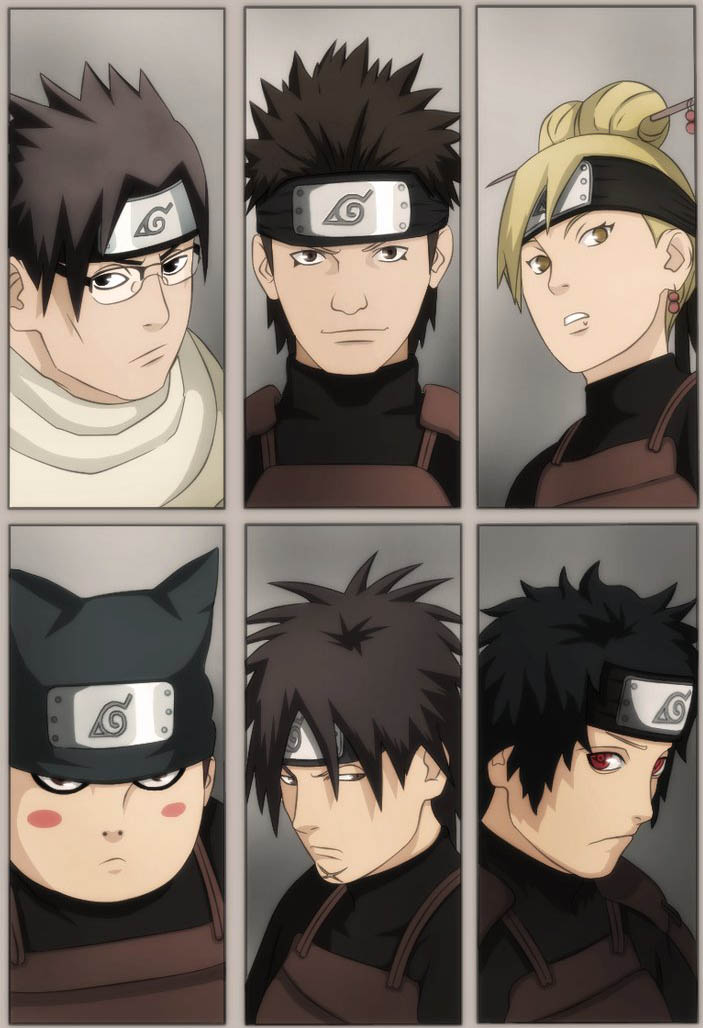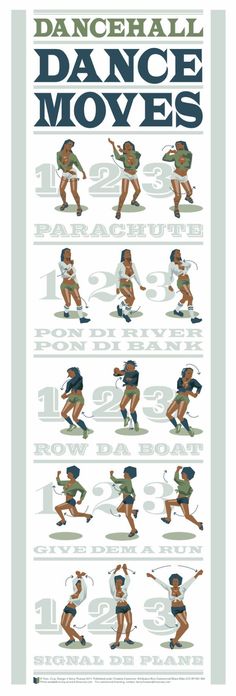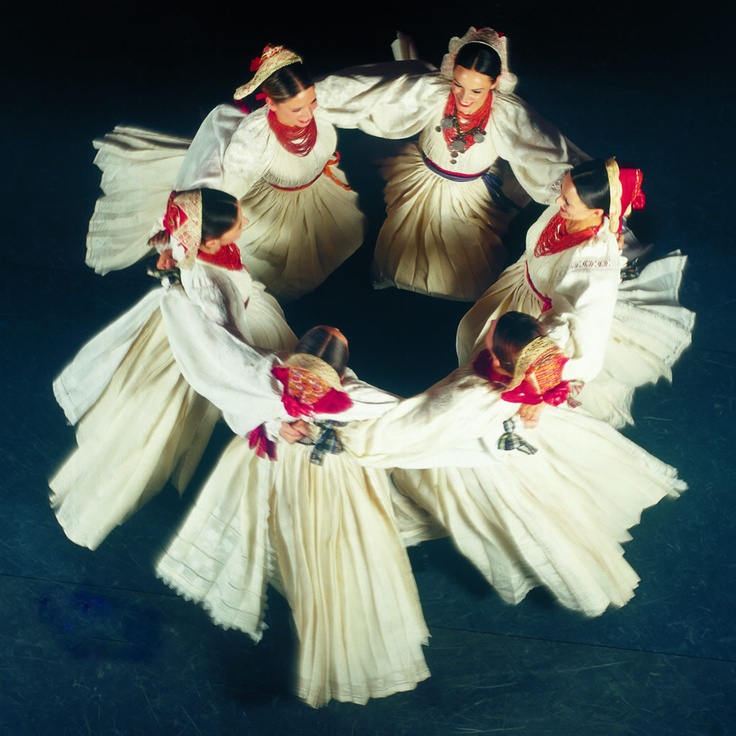How to dance sri lankan baila
Sri Lankan Baila: Its Roots and Variations
Shihan de Silva Jayasuriya, courtesy of THE CEYLANKAN, Vol XXI, No 3, August 2018 … with highlighting emphasis added by The Editor, Thuppahi
The extraordinary love of the Portuguese for music is epitomised at El Ksar el Kabir in Morocco, in 1578, where 10 000 guitars lay on the battlefield, near the dead Portuguese soldiers. The Portuguese took guns and guitars to battlefields! Is it surprising that the Portuguese presence is vibrant through Sri Lankan popular music – Baila?
Baila is a ballad in which the poetry is of paramount importance. A ballad is a short poem suitable for singing which was originally intended to accompany a dance. The etymology of ballad is ballare (late Latin/Italian) meaning ‘to dance’. Today the Portuguese word bailar meaning ‘to dance’ is used in the context of a Ball; dançar means ‘to dance’. Meanings of words change over time and place. The association of the word Baila with dance predominantly undervalues its balladic significance. Music, song and dance are closely knit forms of art and unsurprisingly, Baila refers to music, song and dance in Sri Lanka. This article concerns Baila in Sri Lanka. It does not concern Baila in South America or Europe where Latin languages prevail.
Sri Lanka’s Portuguese era is generally considered to have begun in 1505 when a ship sailing to the Maldives, captained by Lourenço de Almeida, was windswept to Galle. The encounter with the first European power is taken to have ended in 1658 with the fall of Jaffna and Mannar. Throughout Portuguese presence, the Kandyan kingdom remained under Sri Lankan rule, excepting for Batticaloa and Trincomalee which came under Portuguese domination from only the first half of the 17th century. The actual period of Portuguese domination in Sri Lanka was no more than 60 years. Yet the Portuguese legacy, particularly the intangible heritage, has been remarkably durable in underscoring the 1540 prediction of the Portuguese chronicler, João de Barros: “The Portuguese arms and pillars placed in Africa and in Asia, and in countless isles beyond the bounds of three continents, are material objects, that would be destroyed over time but time would not destroy the religion, customs and language that the Portuguese implanted in those lands” [my translation].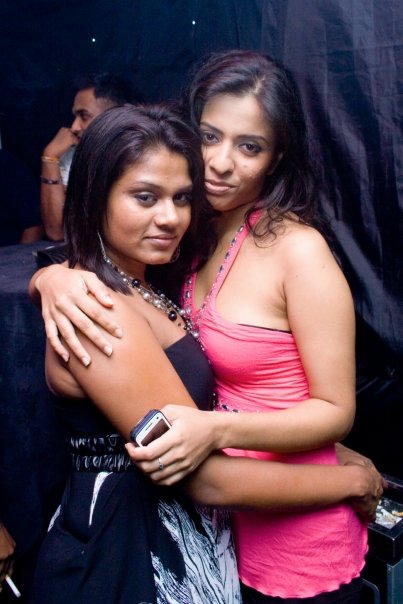
In 1974, the Swasangeetha (‘Our Songs’) programme sponsored by the Associated Motorways Group of Companies (Colombo), televised by Rupavāhini in Sri Lanka, reported Batticaloa Burgher (Sri Lankans with European ancestry) music and songs as Kaffrinha and their dance as Baila. But the dances of the Batticaloa Burghers are Kaffrinha and Lancers. The confusion between Kaffrinha and Baila continues to-date. A few years later, in 1976, the Catholic Burgher Union (Batticaloa) compiled a booklet of cantigas (songs) with religious and secular themes. Batticaloa ballads are linked to Romances, one of the oldest and most important genres of Portuguese sung poetry which survives only in northern Portugal, Trás- os-Montes and the Atlantic archipelago which belongs to Portugal, Azores, and also in north eastern Brazil.
When the BBC World Routes team visited Batticaloa in September 2011, they were astonished to hear these centuries-old musical traditions. Vivid descriptions by Dr. Lucy Duran, an ethnomusicologist at the University of London, are on the BBC website. A few Batticaloa songs are linked to Sinhala Bailas. Bailas are also sung in Tamil, English, Sri Lanka Malay and Sri Lanka Portuguese. The Sinhala Baila, Māla Giravī (‘parrot’) is sung to the tune of the Batticaloa song Terra Iste Terra (‘Land this land’) and the Sinhala baila, Mee Vadayaki Jeevithe (‘Life is a Honeycomb’) is sung as Vi Minha Amor por Baila (‘Come my Love to dance’) in Batticaloa. Sinhala lyrics of these songs are different to the Sri Lanka Portuguese versions.
Lucy Duran, an ethnomusicologist at the University of London, are on the BBC website. A few Batticaloa songs are linked to Sinhala Bailas. Bailas are also sung in Tamil, English, Sri Lanka Malay and Sri Lanka Portuguese. The Sinhala Baila, Māla Giravī (‘parrot’) is sung to the tune of the Batticaloa song Terra Iste Terra (‘Land this land’) and the Sinhala baila, Mee Vadayaki Jeevithe (‘Life is a Honeycomb’) is sung as Vi Minha Amor por Baila (‘Come my Love to dance’) in Batticaloa. Sinhala lyrics of these songs are different to the Sri Lanka Portuguese versions.
Kaffrinha’s Afro-Portuguese connection is signalled through its etymon: Kaffir is an ‘African’ an nha is the Portuguese diminutive. Kaffrinha could mean ‘a bit of African’. A c19th century manuscript in the Hugh Nevill Collection (British Library, London) includes six Kaffrinhas from the Eastern Province: Singellenona (‘Sinhalese Lady’), Korra Jannethaie (‘Blush Joanita’), Bastiahna (‘Bastiana’), Chekoetie (‘Whip’) and Ama die none Frencena (‘Love of Lady Francina’) plus one untitled song grouped as “Cantiga De Purtiegese – Kaffrein – Neger Song Portigiese” (‘Songs of the Portuguese—Kaffrinha—Portuguese Negro Songs’).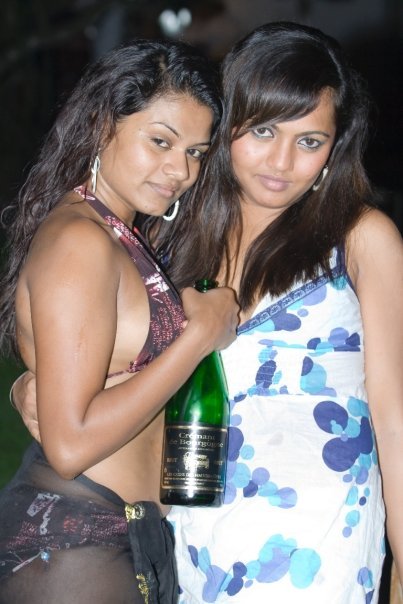 There are no scores, however. My translations of these songs from Sri Lanka Portuguese into Standard Portuguese and English are in the Journal of the Royal Asiatic Society (Sri Lanka) and also in my first book, Tagus to Taprobane (Tisara Prakasakayo, Sri Lanka)
There are no scores, however. My translations of these songs from Sri Lanka Portuguese into Standard Portuguese and English are in the Journal of the Royal Asiatic Society (Sri Lanka) and also in my first book, Tagus to Taprobane (Tisara Prakasakayo, Sri Lanka)
C. M. Fernando, son of Sir Marcus Fernando, who graduated in Law from the University of Cambridge was the pioneer researcher of Portuguese music in Sri Lanka. After presenting his seminal paper in 1894, to the Royal Asiatic Society (Colombo), he accompanied, on the piano, the ‘Ceylon Portuguese’ orchestra which consisted of a banderinha (mandolin), viaule (tenor violin) and rabana (tamborine).
The titles of scores published by Fernando and titles of songs in the Nevill manuscript (19th century) are similar: Singallenona (‘Sinhalese Lady’), Bastiana (‘Bastiana’), Chikothi (‘Whip’) and Coran Janita (‘Blush Joanita’). Kaffrinha’s African connection is confirmed through the titles of songs in Fernando’s paper: Velanda Mazambicu (Mozambican Town- dweller) and Caffri (African).
Fernando describes dances of the Portuguese Burghers as Chikothi and Cafferina [Kaffrinha]. A man and a woman, stand on opposite sides of a room and dance towards each other, exchanging old- fashioned courtesies when they meet in the middle of the room. The man waves a handkerchief and high steps to the beat while the lady lifts her long frilly skirt to manoeuvre the fast footsteps. Fernando contrasts the “Grotesque attitudes and alert movements” of the Kaffrinha with “the slow measures of the Chikothi” which call for “stately and dignified steps”.
In my attempts to identify Chikothi, I made comparisons with the Goan Catholic form of music, song and dance: Mando. TheMando is a stately dance with dignified steps. I interviewed Anthony Noronha, former Conductor of the Nairobi Symphony Orchestra, when he had settled in London. Noronha drew my attention to the folk character of the Mando masterfully conveyed by starting on a minor key and modulating to a major key. At my request, Noronha scored a Mando called Surya Noketranche Porim Porzolleta (‘You Shine just like the sun and the stars’) which is published in my book – Portuguese in the East: A Cultural History of a Maritime Trading Empire (London: I B Tauris). Goan forms of music and dance – Mando, Dulpod and Dekhni – are different to Baila and Kaffrinha due to the varied durations of contact with the Portuguese and the diverse indigenous influences.
Goan forms of music and dance – Mando, Dulpod and Dekhni – are different to Baila and Kaffrinha due to the varied durations of contact with the Portuguese and the diverse indigenous influences.
C.M. Fernando distinguishes Kaffrinha (fast and in 6/8 time – six quavers to a bar and having a “peculiar jerky movement”) from Chikothi (in 3/8 time – three quavers to a bar and “slow and stately”). Fifty years before Fernando, Colonel Augustus de Butts in his book Rambles in Ceylon (1841), describes a “Caffre dance”. The dance somewhat resembled the fandango of Spain; but the resemblance, it must be confessed, was that of a caricature. Two individuals of opposite sexes gradually approach each other with an air of coquetry, making indescribable contortions and grimaces. The female slowly retires from the ardent advances of her lover, who, suiting the action to the word, endeavours to capture the fair fugitive, while he pours forth his tale of love in the most moving tropes that his eloquence can command.
‘The lady of his love’ at length abates somewhat of the air of scorn with which she at first affects to regard her impassioned swain, who, emboldened by this evidence of a favourable impression, and again alarmed at his own audacity, alternately advances towards and retreats from the object of his adoration.
This lively dance was popular with Europeans in Sri Lanka during the 19th century and by the early 20th century had filtered through to Sri Lankans who embraced western modernity. Twentieth century Kaffrinha arrangements by Norbert Rodrigo (Ceylonese Dances), Vincent Rodrigo (Ceylonese Lancers on Kaffrinha Airs and Professor Lord (Caffarina Quadrilles) consist of five movements. The well known Kaffrinha, Singale Nōna (‘Sinhalese Lady’), is within the three scores.
During the early 20th century Kaffrinha was danced in the fashionable Colombo suburb of Cinnamon Gardens, where all parties ended with Singale Nōona. Singale Nōna is today sung in Sinhala as “Yaman Selō Pēra Kadanne”. Kaffrinha is sparked off by cross rhythms and syncopations. Cross rhythms occur with interplay between 6/8 (six quavers to a bar) in the treble and 3/4 (three crotchets to a bar) in the bass. Syncopation involves shifting the accents to unorthodox places. Accenting the parts in-between beats or playing ‘off the beat’ drives the music and adds excitement to the performance. ‘Kaffir airs’ were published by Herr Somers, Band Master of the Ceylon Rifle Regiments, under the title After Supper Kaffir Quadrila, but his scores have not been traced so far.
Kaffrinha is sparked off by cross rhythms and syncopations. Cross rhythms occur with interplay between 6/8 (six quavers to a bar) in the treble and 3/4 (three crotchets to a bar) in the bass. Syncopation involves shifting the accents to unorthodox places. Accenting the parts in-between beats or playing ‘off the beat’ drives the music and adds excitement to the performance. ‘Kaffir airs’ were published by Herr Somers, Band Master of the Ceylon Rifle Regiments, under the title After Supper Kaffir Quadrila, but his scores have not been traced so far.
Contexts and descriptions of Kaffrinha vary. Novelist, Carl Muller’s vivid descriptions in Jam Fruit Tree (1993): “… and revels they were. The band had arrived: three boys in bow ties, two fiddles and a tom-tom and Jessie Ferdinands produced a harmonica and Finny Jackson played the spoons, clickety-clack on his knees and a rollicking kaffrinja [Kaffrinha] set everybody in motion with Colontota’s uncles hitching up their sarongs and jerking around shouting ‘adi-ji adi-ji’ and the ladies holding the sides of their skirts and high-stepping to the beat”.
Kaffrinha can assume a comical character. In the late 19th century, C. Don Bastian, a pioneer Sinhala playwright, introduced Kaffrinha to the theatre through the jester singing a Kaffrinha at the start of Rolina Nādagama in 1879. In the 20th century, Ediriweera Sarachchandra, Sri Lanka’s foremost dramatist, identifies Kaffrinha as a body of music introduced by the Portuguese to Sri Lanka. Dēva Suriyasena, a pioneer of Sinhala music in the early 20th century, states that the lilting rhythm and tunes of Kaffrinha danced by Portuguese mercenaries, some of whom were Africans, fell on willing ears in the coastal areas.
Kaffrinha is also the traditional dance of the Batticaloa Burghers, calling for alert movements and accompanied by lively tunes. Typically, four couples perform Kaffrinha at weddings. Marriage ceremonies are not complete until the Kaffrinha is danced. The bride and groom open the dance and are followed by the bridesmaid and best man and two further couples. Dancing continues for a few hours with only short breaks between the five movements when the musicians change mode.
Dancing continues for a few hours with only short breaks between the five movements when the musicians change mode.
The father of Alex Van Arkadie, a Burgher, was a close acquaintance of Wally Bastianz, the composer of Chorus Baila (generally known in Sri Lanka as Baila). Van Arkadie recalls Colombo’s Kaffrinha dancers of the 1950s, travelling entertainers who performed once a year, in affluent Dutch Burgher houses. Instruments played were the viola, violin, rabāna (tambourine), triangle, piano accordion and gourd rattles (maracas). The most popular item in the variety entertainment show was the Kaffrinha, performed by a Burgher couple disguised as Africans by blackening their faces right down to the neck.
Fingers were encased in white hand gloves to cover their paler skin. The man wore a prominent red bow- tie which fluttered freely against his long-sleeved brightly coloured satin shirt, a long tail-coat and a black top-hat which he tipped each time he curtsied and bowed before the lady who swung her flared skirt provocatively in order to respond to his charming gestures. The woman wore a wig of raven black hair in a mass of fine curls bunched together in tassels to hang from under a neatly draped bandanna (‘scarf’ from the Portuguese word ‘banda’). A colourful pair of large ear-rings and a string of large beads plunged down from her neck to her heavily endowed, perhaps padded, bosom. Her taffeta blouse blended finely with her clothes but was in contrast to the man’s shirt. Her sleeves held layers of frills which dangled and danced down from her shoulders to the rhythm of the beat. The provocative swing of her hips was exacerbated by her pronounced hips, accentuated with a cushion. Her rich satin skirt was flashily decorated in polka dots all-over, or broad bands of coloured borders at the hemline, and her underskirt was lace-edged or hand- embroidered. The Kaffrinha was a feast of captivating colourful flashes, entrancing movements and jubilant sounds made to the cheers and yells of the audience.
The woman wore a wig of raven black hair in a mass of fine curls bunched together in tassels to hang from under a neatly draped bandanna (‘scarf’ from the Portuguese word ‘banda’). A colourful pair of large ear-rings and a string of large beads plunged down from her neck to her heavily endowed, perhaps padded, bosom. Her taffeta blouse blended finely with her clothes but was in contrast to the man’s shirt. Her sleeves held layers of frills which dangled and danced down from her shoulders to the rhythm of the beat. The provocative swing of her hips was exacerbated by her pronounced hips, accentuated with a cushion. Her rich satin skirt was flashily decorated in polka dots all-over, or broad bands of coloured borders at the hemline, and her underskirt was lace-edged or hand- embroidered. The Kaffrinha was a feast of captivating colourful flashes, entrancing movements and jubilant sounds made to the cheers and yells of the audience.
Leopold Ludovici, a surveyor, who visited a Kaffir village in Puttalam at the end of the 19th century mistook the music, which he calls Kaffrinha, for being a fight.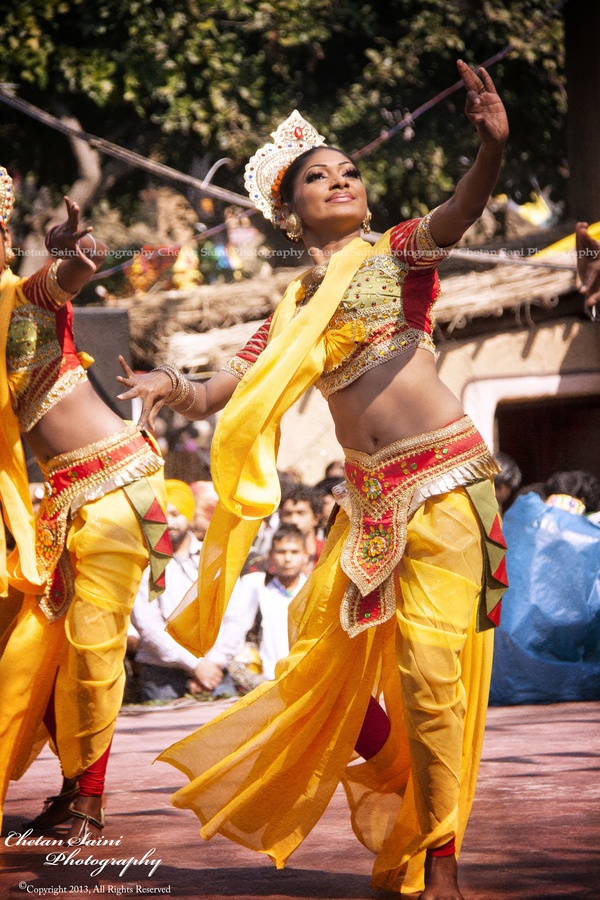 Kaffrinha is loud and energetic. The surveyor and writer, R. L. Brohier, described the music in a Puttalam village called Sellan Kandel, as Kaffrinha and Chikothi. He wrote in the 20th century that the ‘Kaffir-Portuguese Chikothi’ music had been absorbed into Sri Lankan popular culture, surfacing at gatherings which sought an outlet for hilarity – these were given the heterogeneous term Baila.
Kaffrinha is loud and energetic. The surveyor and writer, R. L. Brohier, described the music in a Puttalam village called Sellan Kandel, as Kaffrinha and Chikothi. He wrote in the 20th century that the ‘Kaffir-Portuguese Chikothi’ music had been absorbed into Sri Lankan popular culture, surfacing at gatherings which sought an outlet for hilarity – these were given the heterogeneous term Baila.
Afro-European links of Kaffrinha and Baila are rekindling an interest in the music of Sri Lankans with African and European ancestry. But the music of the largest Afro-Sri Lankan community in Sirambiyadiya (Puttalam) is not Kaffrinha. Because their ethnonym is Kaffir (from the Arabic word qafr which means ‘non- believer’ and was used for Africans by the Arabs) their music is mistakenly assumed to be Kaffrinha. Lyrics of Manhas are mostly in Sri Lanka Portuguese, but the melodies are distinct from the Batticaloa Cantigas (songs) and Kaffrinhas.
A genre known as Vāde Baila (‘debate Baila’), musical debates and contests of wit and repartée, were a popular form of entertainment in Sri Lanka. Sumathipala Perera, a leading Vāde Baila singer, formed a society to keep this form of art alive. This tradition is similar to canto ao desafio (Challenge Song) in Portugal and Brazil. Vāde Baila, perhaps due to its theatrical nature and demanding skills, has given way to Chorus Baila. The originator of Chorus Baila, Gajanayake Mudiyanselāge Ollington Mervin Bastianz (1913-1985), is better known as Wally Bastianz. A single recording with 14 of his best known songs, released in 2004 by Torana (Colombo), sing out the poetry of the exotic performer which gripped the people. The simplicity of Bastianz’s narratives and the realities that he addressed and played out with catchy rhythms, popularised Bailas. Bastianz was a brilliant lyricist, an educator and a critic. He evoked sentimental feelings of a nation whose values were distorted and strained by 450 years of western domination.
Sumathipala Perera, a leading Vāde Baila singer, formed a society to keep this form of art alive. This tradition is similar to canto ao desafio (Challenge Song) in Portugal and Brazil. Vāde Baila, perhaps due to its theatrical nature and demanding skills, has given way to Chorus Baila. The originator of Chorus Baila, Gajanayake Mudiyanselāge Ollington Mervin Bastianz (1913-1985), is better known as Wally Bastianz. A single recording with 14 of his best known songs, released in 2004 by Torana (Colombo), sing out the poetry of the exotic performer which gripped the people. The simplicity of Bastianz’s narratives and the realities that he addressed and played out with catchy rhythms, popularised Bailas. Bastianz was a brilliant lyricist, an educator and a critic. He evoked sentimental feelings of a nation whose values were distorted and strained by 450 years of western domination.
Wally Bastianz felt the pulse of the people and articulated their emotions by accentuating the heartbeat of Sri Lanka through his compositions of Chorus Baila
Wally Bastianz was called ‘The Exotic Ceylonese Performer’ when he featured in Colombo’s night clubs. He was a versatile musician: he played the banjo, piano, ukulele, Spanish guitar, Sri Lankan viaule and accordion. His band included Aelian Soysa, Marshall Wambeck, Anton Johns, Maxi Leonard and Morris Fernando. Bastianz sang in Sinhala, Tamil, English, Malay and Sri Lanka Portuguese, reaching out to all Sri Lankans.
He was a versatile musician: he played the banjo, piano, ukulele, Spanish guitar, Sri Lankan viaule and accordion. His band included Aelian Soysa, Marshall Wambeck, Anton Johns, Maxi Leonard and Morris Fernando. Bastianz sang in Sinhala, Tamil, English, Malay and Sri Lanka Portuguese, reaching out to all Sri Lankans.
Listeners must understand the lyrics to fully appreciate Chorus Baila. Its value is not simply in the music. Ronald Walcott, an American musicologist, in his doctoral thesis submitted to the University of Sri Jayewardenepura (Sri Lanka), in 1978, highlights the poetic value of Baila which surpasses all else in importance. Traditionalists may be sceptical but they cannot disagree that Baila stirs Sri Lankans and as Aelian Soysa sings: “Lankavata Baila gena Wally Bastianz, Baila valin rata hollapu Baila champion” (‘Wally Bastianz, who gave Baila to Sri Lanka was the Baila champion who moved the country with Baila’) in a song dedicated to the maestro who changed the entertainment field in Sri Lanka and carved out a new identity for the Nation.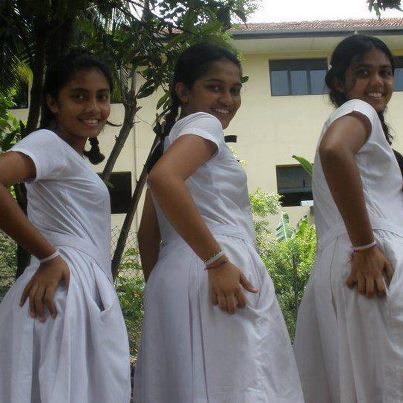
Maya Abeywickrama (2006) maps a few Bailas on to Western music – Hai hui Babi Achchige baisikel eka (Granny Babi’s Bicycle) on to a well- known march, ‘Repasz Band’, composed by Charles Sweeney. Another popular Baila, associated with Moratuwa, a town from where many Baila singers originate, Pun Sanda Pāya Moratuwa Dilennā (Moratuwa is shining under the full moon) is mapped on to ‘On the Beach of Bali Bali’, a Hawaiian song. Bailas are also influenced by other types of foreign music now. Baila has become a conduit for almost every major international popular musical trend, from Minstrelsy, Hawaiian, Country-Western, Caribbean Calypso, Zairian Soukous, north Mexican Mariachi and Disco.
Gerald Wickremasooriya of Sooriya Records moved Baila into the age of rock ‘n’ roll by including electric guitars, drum kits and synthesisers. Baila has travelled overseas with the Sri Lankan diaspora. Since Bastianz, Baila has evolved through different styles sung by soloists and groups.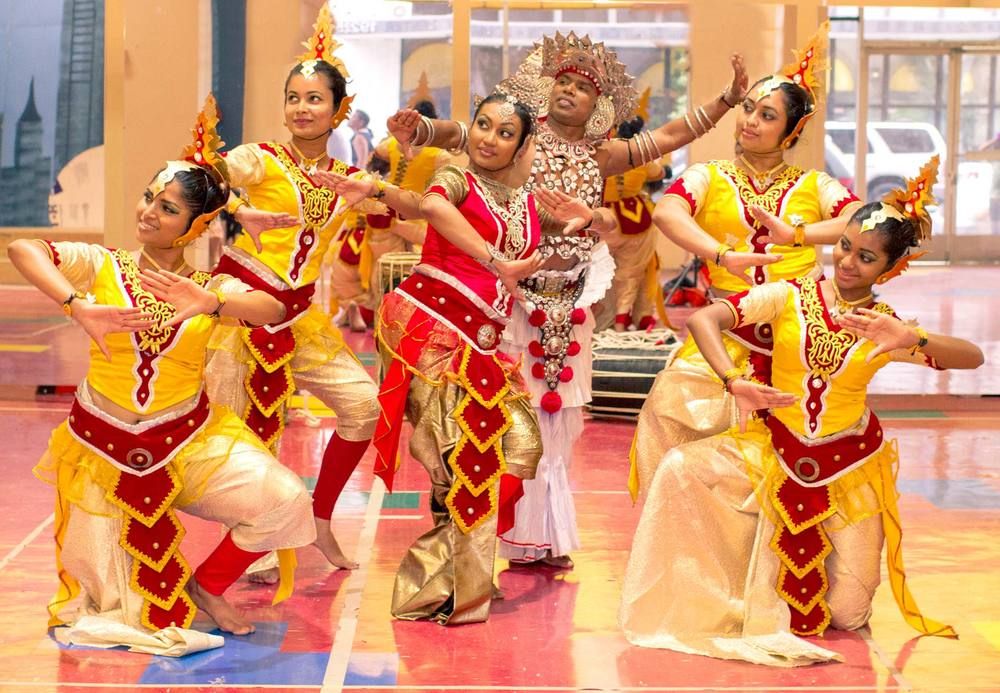 The dynamics of Baila has strengthened its popularity as the changing tastes of generations are absorbed and played out. As Sri Lanka discovered and explored her post-independent identity, Baila became more indigenised.
The dynamics of Baila has strengthened its popularity as the changing tastes of generations are absorbed and played out. As Sri Lanka discovered and explored her post-independent identity, Baila became more indigenised.
The word Baila has assumed the meaning ‘song’: Vāda Baila, Kāvadi Baila, Kāpiri Baila, Paraguayan Baila, Chorus Baila, Kapiriñña (Kaffrinha) Baila and Nidahasa (Independence) Baila. More importantly, Chorus Baila is confused with Vāda Baila as Wally Bastianz was a Vāda Baila singer when he composed Chorus Baila which instantaneously became popular. Chorus Baila is neither an import from Portugal nor a genre that was introduced by the Portuguese. Chorus Baila compositions were influenced by the Afro-Portuguese genre Kaffrinha and Vāda Baila.
Chorus Baila signifies a new post-colonial identity, which represents the transformed Nation. Bastianz felt the pulse of the people and articulated their emotions by accentuating the heartbeat of Sri Lanka through his compositions of Chorus Baila.
*** ***
ALSO VISIT* Prasad Jayamanna: “Lost Culture. Unique Sri Lankan-African Language Fading Into Obscurity…,” 19 September 2017, https://thecatamaran.org/2017/09/19/unique-sri-lankan-african-language-fading-into-obscurity/* Kannan Arunasalem: “Kaffir culture in Sri Lanka,” 15 November 2012, http://originalpeople.org/video-kaffir-culture-in-sri-lanka-india/
- The Sidi Project, http://thesidiproject.com/tag/sri-lanka/
Like this:
Like Loading...
Afropop Worldwide | Baila for Dummies: A Quick Guide to Sri Lanka’s Afro-Portuguese Pop Music
The musical influence of the African Diaspora pop up in all sorts of places that you wouldn’t expect. Sri Lanka’s great pop music tradition from the 1940s through today is called baila, and it contains hints of the almost 500 year African presence on the island. In our radio documentary “African Sounds of the Indian Subcontinent,” we explore the cultural flows that led to the creation of this surprising sound, through interviews with Afro-Sri Lanka expert Shihan de Silva. De Silva has written extensively on baila music and Indo-Portuguese creole languages (for example, here). Below is a YouTube-curated crash course in baila to learn more.
In our radio documentary “African Sounds of the Indian Subcontinent,” we explore the cultural flows that led to the creation of this surprising sound, through interviews with Afro-Sri Lanka expert Shihan de Silva. De Silva has written extensively on baila music and Indo-Portuguese creole languages (for example, here). Below is a YouTube-curated crash course in baila to learn more.
The Sri Lankan Kaffirs
Today, there are several small communities of African-descended people living in Sri Lanka, known as the kaffirs. Kaffir – coming from the Arab word for “unbeliever” – is a vicious slur in South Africa, but it’s not considered derogatory in Sri Lanka at all. It’s the word the communities themselves use to describe themselves. The presence of Africans in Sri Lanka has been documented as far back as the 6th century, when Ethiopian traders are known to have stopped by the island. We know that people of African descent have been living in Sri Lanka since the early 16th century, brought as slaves by the Portuguese, who were the first of the island’s long list of European colonizers. The Dutch, the next colonizers to take control of the island, also brought Africans to the island. Finally, the British arrived in the 19th century, and are known to have brought free African soldiers to Sri Lanka to fight in its conquest of the Kandyan Kingdom, who had continued to control the interior of the country throughout the colonial period up until then. We know that the Kandyan army also employed descendents of runaway African slaves from previous waves of African immigration. Over the centuries, the music of the many Africans who stepped foot on the island has filtered into the culture. The Kaffir community in Sirambiyadiya maintains a music tradition they call manha or manja, a polyrhythmic using voices and percussion. The songs are sung in Indo-Portuguese, the Portuguese-based creole language once spoken as a linguafranca on the island but mostly forgotten. http://youtu.be/KP1QxcigeeA
The Dutch, the next colonizers to take control of the island, also brought Africans to the island. Finally, the British arrived in the 19th century, and are known to have brought free African soldiers to Sri Lanka to fight in its conquest of the Kandyan Kingdom, who had continued to control the interior of the country throughout the colonial period up until then. We know that the Kandyan army also employed descendents of runaway African slaves from previous waves of African immigration. Over the centuries, the music of the many Africans who stepped foot on the island has filtered into the culture. The Kaffir community in Sirambiyadiya maintains a music tradition they call manha or manja, a polyrhythmic using voices and percussion. The songs are sung in Indo-Portuguese, the Portuguese-based creole language once spoken as a linguafranca on the island but mostly forgotten. http://youtu.be/KP1QxcigeeA
Kaffrinha: Afro-Portuguese Dance Music
Before there was baila, there was kaffrinha, a style of uptempo dance music connected to the Portuguese presence in Sri Lanka and played since the 19th century.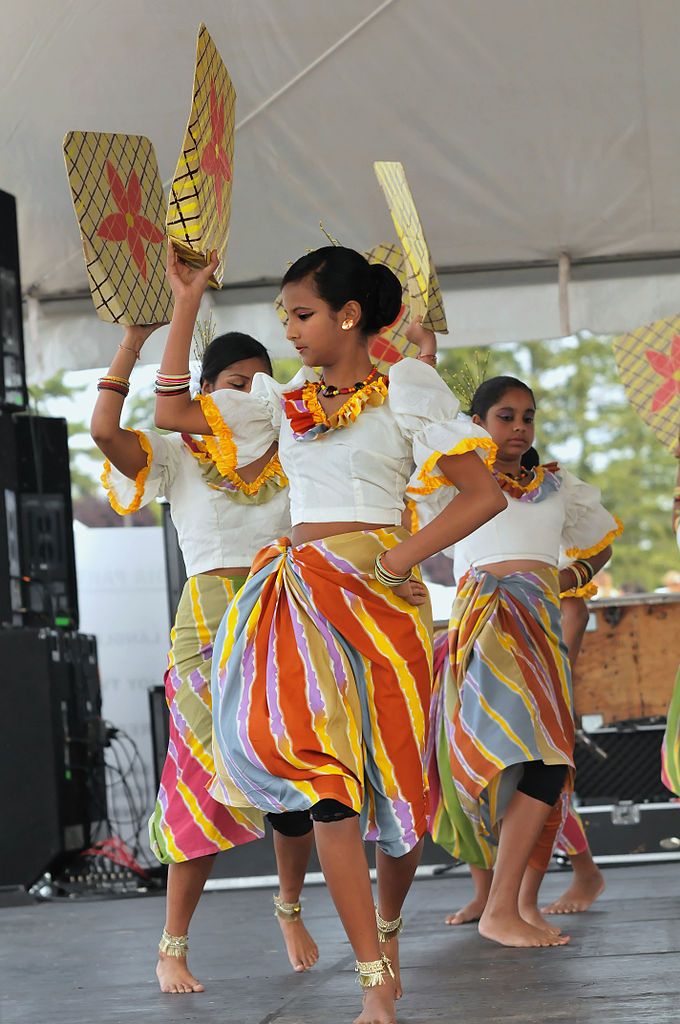 The music’s connection to Africa is signaled first and foremost by the name: the word “kaffrinha” comes from the portguese use of “kaffir,” meaning “African” and the diminutive “-inha”, meaning “a little bit African,” suggesting that the music was a Portuguese take on African music played on the island. The music is played with percussion and string instruments: violins, mandolins, banjos and guitars. It’s always in 6/8 time, with very syncopated, three-against-two beat, another suggestion of its roots in African music. One thing that hits you right away when you listen to it is that, apart from the Sinhala language, it has no obvious musical traits from South Asia: the harmonies and melodies are all based around the Western major scale. This Kaffrinha is often associated with the so-called “Burgher” communities descended in part from Europeans, who continue to live on the coasts. This kaffrinha song, “Meegalu Maalu” by the Sri Lankans, was recorded in 1978, so it’s probably not what the music would have sounded like in the 1800s, but it gives a sense of what the music was about.
The music’s connection to Africa is signaled first and foremost by the name: the word “kaffrinha” comes from the portguese use of “kaffir,” meaning “African” and the diminutive “-inha”, meaning “a little bit African,” suggesting that the music was a Portuguese take on African music played on the island. The music is played with percussion and string instruments: violins, mandolins, banjos and guitars. It’s always in 6/8 time, with very syncopated, three-against-two beat, another suggestion of its roots in African music. One thing that hits you right away when you listen to it is that, apart from the Sinhala language, it has no obvious musical traits from South Asia: the harmonies and melodies are all based around the Western major scale. This Kaffrinha is often associated with the so-called “Burgher” communities descended in part from Europeans, who continue to live on the coasts. This kaffrinha song, “Meegalu Maalu” by the Sri Lankans, was recorded in 1978, so it’s probably not what the music would have sounded like in the 1800s, but it gives a sense of what the music was about.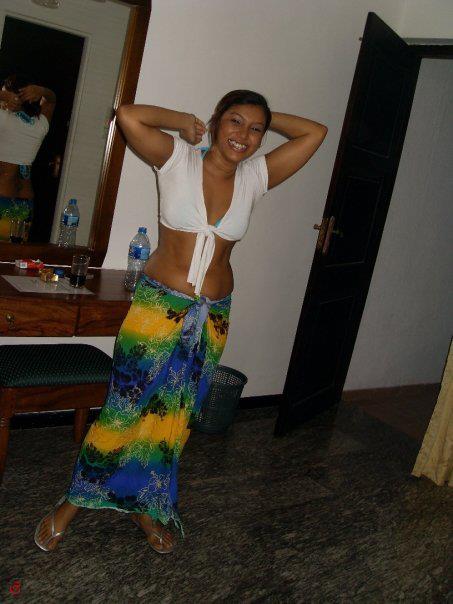
Wally Bastiansz: Birth of Baila
The father of baila music was Wally Bastiansz, a traffic warden from Colombo who was half Sinhala and half Dutch Burgher. Shihan de Silva, a baila researcher we spoke to in our program, says that there was a tradition where lower-class burghers would go to rich burghers households during holidays and dance kaffrinha music while dressed up as Africans, so Bastiansz probably had a lot of exposure to kaffrinha.
Wally Bastiansz
Wally created baila by giving kaffrinha a more lyrical style. His songs became massively popular on the island. Shihan de Silva told us she didn’t think it was a coincidence that the style emerged around the time of Sri Lankan independence. “That’s the time when people want to throw away everything that’s Western but they realize that they can’t do that. Four hundred and fifty years of Westernization can’t be thrown away. So, you know, Wally Bastian comes up with mixing three elements: African, European and Sri Lankan. Something that’s palatable to the changed people because they can’t go back to what they were in the 15th century after their exposure.” One of Wally’s most famous songs was “Irene Josephine.” http://youtu.be/eWYL6SO2JAo
So, you know, Wally Bastian comes up with mixing three elements: African, European and Sri Lankan. Something that’s palatable to the changed people because they can’t go back to what they were in the 15th century after their exposure.” One of Wally’s most famous songs was “Irene Josephine.” http://youtu.be/eWYL6SO2JAo
Baila’s Latin Tinge
As baila grew over the years, it continued to absorb all sorts of music from everywhere into it. In the late ‘60s and ‘70s Caribbean Calypso and various Latin American sounds became a major part of the sound. Paraguayan harp music, of all things, became a temporary sensation in Sri Lanka – allegedly brought over by a Paraguayan cargo ship that somehow ended up docking on the island. All of sudden there was a flurry of bands with names like Los Caballeros, Los Amigos, and Los Flamencos. This ‘60s performance of the Mexican song “Chiquita Linda” on Sri Lanka’s Radio Ceylon, by Los Caballeros is a trip – there’s not too much baila in here, but worth listening to for the impressive Spanish pronunciation, despite being half-way across the world from the nearest Spanish speaking country.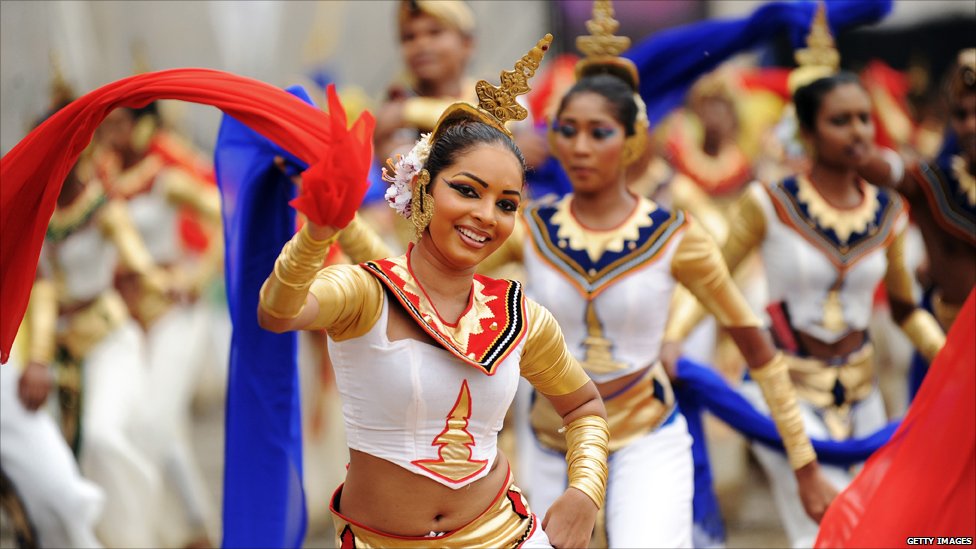 http://youtu.be/BaZU4Mfh-84
http://youtu.be/BaZU4Mfh-84
MS Fernando: The Next Generation
After Wally Bastianz, the most recognizable name in baila is MS Fernando, who was big in baila in the ‘70s and ’80s. Influenced by rock and roll, Fernando and his contemporaries put lots of organs and surf-rock electric guitars in their baila. Fernando was also a major music star of the Sinhala film industry. The song below, “Menike Mama Aai Gedera Enawa” deviates a little bit from the baila formula, but gives a sense of what MS Fernando was up to. http://youtu.be/diGdONyP8m4
Papare: Baila for Tailgating at Cricket Games
Show up at any cricket game in Sri Lanka, and you are sure to hear papare, the pump-up music played by fans on trumpets and snare drums. Often the melodies played on the trumpets come from baila music, and you can definitely hear that 6/8 baila beat in the drums. The talented ladies in the video below aren’t Sri Lankan from what we gather, but perhaps it’s telling that African diaspora dancers are being connected to the music in this video. http://youtu.be/wxMN6Ojctx0
http://youtu.be/wxMN6Ojctx0
The Modern Sound of Baila
Baila never stopped changing with technology over the years – today’s sound is filled with digital synthesizers and drum machines. The music has lost ground to newer genres like R&B and hip-hop, but continues to be played for weddings and parties around the country. The potential cheesiness factor in modern baila, mostly due to those digital synth patches, can be hard for the uninitiated to handle. But as this clip shows, the bands can really rock out live. http://youtu.be/qbLaxa0pXEE
Sri Lankan Traditional Dances | Show in Kandy • Camino Distinto Travel Blog
Kandy Dance Show brings together all the popular dances of Sri Lanka, including the famous walking on burning coals and the Ves ceremony.
Contents
- Practical information
- Origins of Kandyan dance
- Folk dances of Sri Lanka
- Magul Bera - drum show
- Female puja dance
- Natuma demons exorcism 0007 Raban-spinning drums
- Raksha-Battle of Cobra and Poultry
- Tuple Collection Ceremony
- Panther-Singal Warriors dance
- Salupale-Mattering Demon
- Weight-The most famous dance of Sri Lanka
- May-Pavini dance
- Ginghin Sisila - dance of fire
0003
Kandy Show Venue:
Kandy Lake Club
- Website: http://www.
 kandylakeclubdance.com
kandylakeclubdance.com - Address: Sangamitta Mawatha, 7
- Phone: +94772260666 90 Crossed Center Kandy 90
society hall)
- Address: Sangraja Mawatha, 72
- Phone: +94007809559
YMBA
- Address: Rajapihilla Mawatha, near Royal Palace Park
- 2 Phone: +
- 20008
Origins of Kandyan dance
The historical dances of Sri Lanka are associated with centuries-old rituals and sacred ceremonies. They are based on folk beliefs that existed on the island before the adoption of Buddhism by the Sinhalese. People revered various deities who patronized fertility, agriculture, and gave other benefits. There were also demons who brought sickness. They were cajoled with offerings or banished with the help of rituals.
The dances of Sri Lanka can be divided into three types: Kandyan dances, the Sabaragamu style from Ratnapura and the Kolam dance from the plains.
Kandyan dance has its origins in the Kohomba Kankariya ritual.
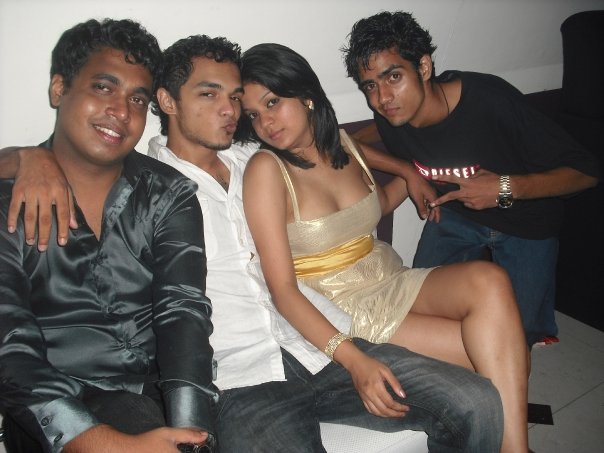 It was performed to propitiate the deity Kohomba, who was responsible for diseases and epidemics. Modern dance Ves has inherited its features.
It was performed to propitiate the deity Kohomba, who was responsible for diseases and epidemics. Modern dance Ves has inherited its features. Traditions have been passed down from teacher to student for centuries. They were not written in books. Dances, music, poetry and other arts were patronized by kings. They presented performers with gifts, gave them shelter in the palace.
With the arrival of the British on the island, the popularity of the Kandyan dance declined. The foreign government stopped sponsoring musical groups. The dance was revived only with the independence of Sri Lanka, and the development of tourism.
Read also: Kandy city in Sri Lanka
Folk dances of Sri Lanka
In the cities of Kandy and Colombo, tourists are offered to attend a dance show. It lasts an hour and consists of ten parts: drumming performances, several types of ritual dances and a spectacular show of fire tamers.
 The event is designed for tourists, but it is worth a visit. We got to Sri Lanka during the holidays, and we saw similar performances in numerous processions in different parts of the country. It is part of a culture that is still alive today.
The event is designed for tourists, but it is worth a visit. We got to Sri Lanka during the holidays, and we saw similar performances in numerous processions in different parts of the country. It is part of a culture that is still alive today. Magul Bera - drum show
The show begins with drumming. Then a young man comes on stage and blows loudly into a seashell. It is an ancient Sinhala custom to perform ritual music while seeking blessings from the Guardian of the Earth. You can listen to one of the classic compositions on this site.
- In the center and on the right - drums geta beray , on the left - tammettama
Drums Geta Beraya elongated, covered with buffalo and monkey skin. Another form of drums is tammettama . They are played with reed drumsticks.
Women's puja dance
Dancers perform a graceful dance and thank the angels.
 Their movements are smooth and slow. Sometimes they hold oil lamps or candles in their hands.
Their movements are smooth and slow. Sometimes they hold oil lamps or candles in their hands. Devol Natum — exorcism
The Devol Natum dance is designed to rid a person of the evil influence of demons, cure diseases or strengthen the immune system. This is part of the rite associated with folk beliefs. The dancers borrowed energetic movements from the dance forms of the southern regions of Sri Lanka.
Raban - spinning drums
Raban plays a key role in the raban dance. It is similar to a small drum played with the palms of the hands.
The girls deftly string the drums on the rod without ceasing to turn them.
Raksha - battle between cobra and bird
The raksha dance, traditionally performed in masks, symbolizes the battle between a cobra and a bird.
 It is based on the myth of the king of birds, Garuda, who fearlessly killed a cobra ( nagi) to rescue himself and his mother from slavery.
It is based on the myth of the king of birds, Garuda, who fearlessly killed a cobra ( nagi) to rescue himself and his mother from slavery. This dance is used to exorcise demons from the possessed, and is still considered an effective treatment for mental illness in Sri Lanka.
Tea picking ceremony
Cheerful girls in colorful dresses depict the process of picking tea leaves. The dance is performed to the accompaniment of drums and flute.
Panteru - Sinhalese warrior dance
It is believed that it originated during the time of Prince Siddhartha, who became Buddha. The name comes from a musical instrument - panther , similar to a tambourine. Rhythm is created by unchanging drums. The dance depicts Sinhalese warriors going into battle. Sinhalese kings hired panther dancers to celebrate their victories.
Salupalia — mocking the demon
It has long been believed in Sri Lanka that demons brought diseases to people.
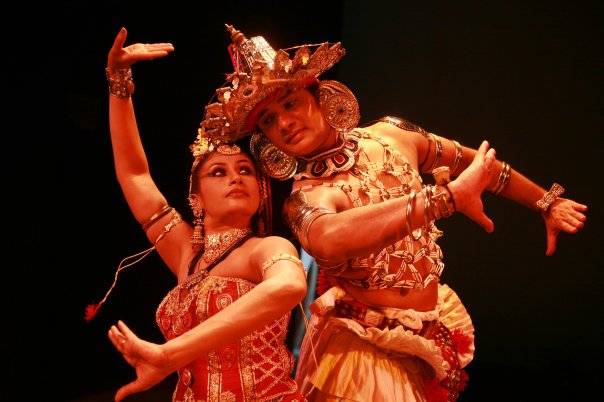 Salupalia is a humorous dance in which a hairy demon is ridiculed for the amusement of the audience.
Salupalia is a humorous dance in which a hairy demon is ridiculed for the amusement of the audience.
Ves is Sri Lanka's most famous danceThe Ves dance originated from the legendary Kohomba Kankariya dance.
According to legend, the Indian king Panduvasdeva fell ill. Every night he dreamed of a leopard with its tongue hanging out. Local healers believed that the reason for this was the black magic of the first wife of King Vijay - Kuveni. Vijaya was Panduvasdeva's predecessor on the throne. Shamans who lived in Sri Lanka could heal the king. Panduvasdeva came to the island. Local dancers performed dance 9 for him0085 Kohomba kankariya, and disease disappeared.
The costume of the dancers consists of a wide skirt, bare breasts are covered with necklaces of silver and ivory, and bracelets of chased silver are on the arm.
Mayura - peacock dance
The dancers imitate the graceful movements of the peacock.
 According to Sri Lankan mythology, this bird carries Skanda, the god of war, on its wings. He is worshiped by both Buddhists and Hindus.
According to Sri Lankan mythology, this bird carries Skanda, the god of war, on its wings. He is worshiped by both Buddhists and Hindus. Gini Sisila - fire dance
Fire dance in Ceylon demonstrates the power of faith over fire and the twenty-seven devils that trouble mankind. The fire dancers' absolute faith protects them from the flames.
Walking on hot coals goes back to the epic poem "Sita and Rama". Ravana, the king of Ceylon, kidnapped the princess of India, Sita. Rama's husband, an Indian king, brought her back home. To prove her chastity during her forced stay with Ravana, the woman walked through the fire barefoot and remained unharmed.
Elena
I live on a journey, moving slowly between countries.
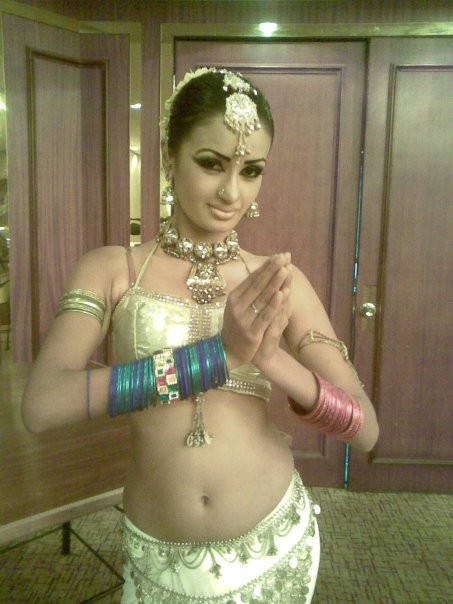 Behind already 51 countries and 4 continents.
Behind already 51 countries and 4 continents. My first travel experience was a package tour of Turkey in my early childhood, where I got goosebumps admiring the ancient ruins. I started traveling on my own around Europe at 16, hunting for Ryanair sales. The proximity of St. Petersburg to the Baltics simply did not leave me a chance.
In the 2010s, a boom began around the world and wintering in warm countries. I learned about couchsurfing, hitchhiking, volunteer programs. I began to wonder: why return to one point, if you can live on a journey?
Pretty soon I was drawn to countries in which nothing is clear: China, Kenya, Morocco. I slept in a tent next to hippos, climbed the sacred Chinese mountains, boldly bargained with Arab traders, ate crocodiles and snakes - and less and less wanted to return to "normal life".
In 2016, I spent a short time in Canada, where I studied English and French, but quickly got bored in the measured rhythm of Canadian life.
 The troubles that fell on my head made me understand that it was time to start living my own way, without regard to other people's ideals.
The troubles that fell on my head made me understand that it was time to start living my own way, without regard to other people's ideals. I bought a one way ticket to Cuba and went to explore Latin America with no plans and a tiny budget. Hitchhiking, camping, coaching, volunteering have become my everyday life. I lived with real Indians, met Amazonian shamans, walked the mountains with a backpack for ten days, and lived more than a dozen bright adventures.
The journey lasted two years. On a private island in the Caribbean, I met my future husband. Since then we have traveled together.
During the pandemic, I did not betray myself and continued to travel. I got married, got a dog, climbed 6,000m and started rock climbing. And although I have to adapt to constantly changing conditions, this pace of life suits me.
Briefly about my hobbies:
I go hiking, climbing, climbing. I always carry a tent with me.
I love Indians and other small nations.
 For the sake of getting to know the natives, I climb into the thicket of the jungle, go on foot for a week in the mountains, climb far beyond the google maps.
For the sake of getting to know the natives, I climb into the thicket of the jungle, go on foot for a week in the mountains, climb far beyond the google maps. I like tasty and unusual food. I do not disdain grasshoppers, beetles, crocodiles, armadillos and beer from the saliva of the Indians. But I also study the normal cuisine of countries with enthusiasm.
I appreciate good wine and love experiments. I try local wines, even if it's Morocco and Egypt (don't follow my example).
In addition to traveling, I go diving, for many years I dance boogie-woogie, pull dumbbells in the gym, do yoga and acroyoga, ride a hundred kilometers on a broken bike, write articles and stories. Previously, she was fond of photography, worked with underground rock bands.
Articles: 328how much it costs, what to see, how to organize
Evgenia Izotova
visited Sri Lanka
Author profile
In February 2020, my husband and I spent a week in Sri Lanka.
 There we swam in the Indian Ocean, fed the elephants and climbed to the top of the waterfall.
There we swam in the Indian Ocean, fed the elephants and climbed to the top of the waterfall. From January 21, 2021, the airport of Sri Lanka began to receive everyone. Read about how to get there now in our other article. And I will tell you how much we spent on the trip, what is worth seeing and what you need to be afraid of.
We spent on a trip to Sri Lanka 149,963 R
Flight tickets 68 914 Р Excursions 433 $ (27 700 R) Housing 21 263 Р Transfer to the hotel and airport $130 (R8300) Hepatitis A vaccine 6000 R Food 13 500 LKR (5265 R) Souvenirs 12 540 LKR (4890 R) Transport 7000 LKR (2730 R) Visa for husband $40 (2500 R) Insurance 2401 P Flights
68 914 p
Tours
433 $ (27,700 r)
Housing
21 263 R
Transfer to the hotel and at the airport
130 $ (8300 r)
vaccination of hepatitis A
6000 R
Food
13 500 LKR (5265 r)
Souvenirs
540 LKR (4890 R)
Transport
7000 LKR (2730 R)
Visa
40 $ (2500 Р)
Insurance
2401 Р
What kind of country
Sri Lanka is an island next to India, washed by the Indian Ocean.
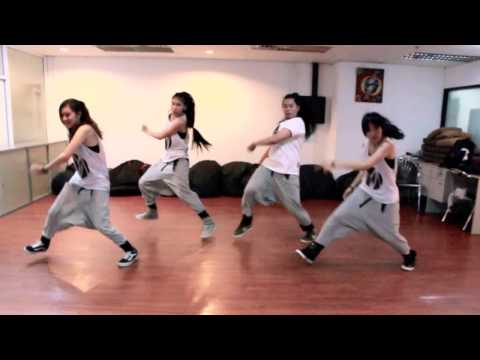 The temperature in Sri Lanka is approximately the same all year round, around +30 °C. The water temperature is about the same, swimming is a pleasure. At the same time, it is not stuffy there: I usually do not tolerate the heat well, but I was comfortable on the island most of the time. The only thing is that you should always carry water with you.
The temperature in Sri Lanka is approximately the same all year round, around +30 °C. The water temperature is about the same, swimming is a pleasure. At the same time, it is not stuffy there: I usually do not tolerate the heat well, but I was comfortable on the island most of the time. The only thing is that you should always carry water with you. People usually go to Sri Lanka for a beach holiday. But this is not the only entertainment: on the island you can see tea plantations, various exotic animals, Buddhist temples and much more.
The ocean water is very warm. We went swimming in the morning when it wasn't very hot. There were a lot of sunbeds on the beach. They could be used free of charge until 17:00When and where to go
You can go to Sri Lanka almost at any time of the year, only to different parts of the island. The exception is October, when it rains in Sri Lanka.
From April to July the south and center of the island is flooded, and the northeast is high season.
 There are several resorts there, such as Trincomalee, Nilaveli, Kalkuda and Pasikuda. Locals from the south usually come there in the summer.
There are several resorts there, such as Trincomalee, Nilaveli, Kalkuda and Pasikuda. Locals from the south usually come there in the summer. In August and September the dry season starts in the center of the island and continues in the northeast. On the forums, it is advised to take a train along the route Ella - Nuwara Eliya - Kandy. In Ella, you can see the famous nine-arch bridge and climb Little Adam's Peak, in Nuwara Eliya you can admire tea plantations and mountain landscapes, and in Kandy you can go to the Temple of the Tooth Relic. It is also worth going to Sigiriya and climbing the Lion Rock.
From November to March is the season in the southwest of the island. There are many resorts there: Negombo, Bentota, Hikkaduwa, Unawatuna, Koggala, Weligama, Mirissa, etc. We rested in the suburbs of Galle and went to swim in Unawatuna. Galle is a city where there used to be a Dutch colony. There you can go to the Dutch fort, which is included in the UNESCO World Heritage List, in Mirissa you can go surfing and see blue whales, and in Koggala you can go to the turtle farm.
 There is not much to do in Colombo, the unofficial capital of Sri Lanka: it is dusty, there are no beaches and there is nothing to see. Most people go there to extend their visas.
There is not much to do in Colombo, the unofficial capital of Sri Lanka: it is dusty, there are no beaches and there is nothing to see. Most people go there to extend their visas. /faq-srilanka/
Sri Lanka: What you need to know before you travel
Our readers spend less on vacation
Get started and join our newsletter. As a gift, we will send 10 important articles about saving money on trips
Visa
Citizens of Russia can get a visa to Sri Lanka online. It costs $35 (2435 R). Even earlier, a visa could be obtained at the airport of Sri Lanka for $40 (2782 R), but now you can enter the island only with an electronic visa.
The electronic visa application form must be completed in English. It is important to fill in the data exactly as they appear in the passport - name, date of birth, citizenship, passport number. If you make a mistake in these data, you will not be allowed into the country at the airport and you will have to pay for a visa again.
 I advise you to definitely check the data in the letter that you will receive in the mail - it will be necessary to show it at the border. If there are two or more of you, apply for a tourist visa for a group.
I advise you to definitely check the data in the letter that you will receive in the mail - it will be necessary to show it at the border. If there are two or more of you, apply for a tourist visa for a group. We received visas in November 2019years - then they were free for 48 countries, including Russia. When we received letters in the mail, we did not double-check the data in them. And when we arrived in Sri Lanka, at the airport it turned out that we made a mistake in my husband’s passport number: instead of 90, they wrote 09 at the end. Because of this, we had to pay $40 (2782 R) for his visa. After that, it was done in 10 minutes.
We applied for an electronic visa, we received two letters in the mail. In fact, these letters are visas - we showed them to the border guards at the airport in Sri Lanka. Unfortunately, we made a mistake in my husband’s details and we had to reissue his visa on the spot and pay for it. We took out insurance for 2401 R. In 2021, you need to buy insurance from People’s Insurance PLC for $12. It is valid for a month and covers the cost of treatment in the amount of $50,000
It is valid for a month and covers the cost of treatment in the amount of $50,000 Getting there
There are several airports in Sri Lanka. We flew to the Bandaranaike airport in the largest city in the country - Colombo. In February 2020, even before the coronavirus pandemic, it was possible to get there by direct Aeroflot flight in 8.5 hours. We paid 68,914 R for tickets for two.
68,914 R
we paid for air tickets
In May 2020, when I wrote this article, there were no direct flights to Sri Lanka. At the same time, tickets did not become more expensive. For example, in September 2020, it was possible to fly to Colombo and back with a transfer for 30 943 R.
A flight with a transfer lasts more than 12 hours On the plane, before boarding, we were given such cards. They had to be filled out and presented at passport controlFrom Colombo we had to get to Galle. You can get there by bus, train or order a transfer.
 We chose a transfer, even though it was much more expensive. Riding a bus is still a pleasure: it's crowded, hot and shaking. The train, they say, is worth a ride, because it travels along the ocean. But we didn’t want to look for a train station or a bus stop immediately after the flight, and then drive for four hours in the heat.
We chose a transfer, even though it was much more expensive. Riding a bus is still a pleasure: it's crowded, hot and shaking. The train, they say, is worth a ride, because it travels along the ocean. But we didn’t want to look for a train station or a bus stop immediately after the flight, and then drive for four hours in the heat. We paid $65 (4150 R) for the transfer, we got to the hotel in two hours. We also booked a transfer back.
There are many amazing graffiti on the houses of Sri Lanka. This drawing was on the wall of the tea factoryAccommodation
Some guides write that in Sri Lanka it is best to book a hotel only for the first couple of days, and then look for accommodation on the spot - supposedly it will be much cheaper. But we decided not to risk it and booked a place on Airbnb for the whole week, paid 21,263 R. for it.
The cottage where we stayed
The house had air conditioning and a refrigerator, so we didn't have to think about breakfast - it was included in the bill.
 The floors and walls in the house were made of concrete - thanks to this, it was not hot there, even if the air conditioner was not working. And around the clock birds sang and crickets chirped.
The floors and walls in the house were made of concrete - thanks to this, it was not hot there, even if the air conditioner was not working. And around the clock birds sang and crickets chirped. I filmed our house and the jungle around it. I advise you to watch with sound
As a result, it turned out that we were not ready for such close proximity to nature. On the first night, we barely fell asleep - it always seemed to us that someone was scratching in the bathroom. It turned out that it was the noise of the squirrels that lived under our roof. Another night we saw a huge cockroach above our heads - five centimeters long. He crawled onto the net that hangs on the bed. In addition to cockroaches, there were hordes of ants in the house. We quickly stopped paying attention to all this, but at first it was unusual.
Money
The national currency of Sri Lanka is the Sri Lankan rupee (LKR). 1 LKR is equal to approximately 37 kopecks. You can hardly buy rupees in Russia, so I advise you to take dollars or euros with you, and exchange them in Sri Lanka.

When we arrived in Sri Lanka, our driver advised us to withdraw money immediately at the airport — he said that the exchange rate is about the same everywhere. And so it turned out. You can also change currency in banks and small shops, but we didn’t need it.
/costly-trips/
Expensive and delicious: 5 travel ideas that will be remembered for a lifetime
It would not be easy in Sri Lanka without cash - cards were accepted only in supermarkets.
These are Sri Lankan rupees. 5000 LKR is the largest denomination 1 LKR is the smallest coin, it is at the bottomThese are Sri Lankan rupees. 5000 LKR - the largest denomination 1 LKR is the smallest coin, it is at the bottom Transport
There is a lot of traffic in Sri Lanka. You can move around the island by trains, buses, bikes, tuk-tuks and cars. Even before the trip, we watched an episode of "Eagle and Tails" about the island and found out that bus drivers in Sri Lanka drive just crazy, overtake everyone in a row, rush at high speed and do not always fully brake at stops.
 Therefore, we moved around the island only in cars and tuk-tuks.
Therefore, we moved around the island only in cars and tuk-tuks. Sri Lanka edition of Eagle and Tails
Tuk-tuks are three-wheeled cars without doors. Tuk-tuk trips are usually inexpensive - we drove from the hotel to Unawatuna Beach in 15 minutes and 500 LKR (186 R). The owner of the hotel called the drivers to us.
Once we went with a street barker and he charged us 900 LKR (335 R) for the trip from the beach to the hotel with a stop at the supermarket - it's expensive. After that, we began to negotiate the price of the trip at the very beginning and bargain.
This is what a tuk-tuk looks like. Drivers decorate and modify them in different ways: they hang special curtains, attach bottle holders, hang photos, etc. It is unlikely that there are two identical tuk-tuks in Sri Lanka. Tuk-tuk drivers often pour water into bottles from under the expensive alcoholFood
Sri Lankan staple food is rice and curry. Curry is served with a variety of additives: chicken, seafood, vegetables, fruits, legumes.
 Our landlady cooked us a curry for 1000 LKR (372 R).
Our landlady cooked us a curry for 1000 LKR (372 R). For breakfast, they brought us a traditional Sri Lankan dish - egg hoppers. Hoppers are a thin pancake prepared in a special way. You need to roll it with your hands into a tube along with the egg and eat it. My husband ate this dish with pleasure. I liked pitta more - a rice cylinder with coconut. I would never have thought that this combination is so tasty.
We were delighted with the Sri Lankan tea. It was much stronger and richer than ordinary tea in bags. In a cafe, we paid an average of 300 LKR (111 R) for two cups of tea.
Most of all in Sri Lanka we liked fruits: they were cheap, tasty and juicy. We finally tried papaya and other exotics: mango, mini pineapples, mini bananas, elephant apple.
We bought fruits and other products in supermarkets - there is a good choice and low prices. For example, 1.5 liters of water cost about 70 LKR (26 R), a jar of yogurt - about 50 LKR (18 R), a pound of bread - about 170 LKR (63 R).

Attractions
Pinnawala Elephant Orphanage. To get to the nursery by 9:00, we left Halle at 6:00. You need to buy a ticket at the entrance. A ticket for locals costs 110 LKR (41 R), and for foreigners - 3000 LKR (1117 R).
The nursery is open daily from 8:30 am to 5:30 pm
In the nursery, you can feed the baby elephant and watch the elephants bathe. They bathe in the Maha Oya River, where they march in formation through the streets of Pinnawela. Many elephants have chains, and the drovers have sticks with sharp tips in their hands. With us, they did not use these sticks.
Elephants go for a swim - video
On the river, mahouts pour water from a special device on the elephants and wash them. After that, the elephants go to the opposite shore and, with the help of their trunk, douse themselves with sand - it protects them from insects.
Diyaluma Falls is the second largest waterfall in Sri Lanka, its height is 220 meters.
 We climbed to the top of the waterfall with a guide. It was possible to go without him, but then we would most likely get lost. This guide was found by our driver. I think it’s not difficult to find a guide on your own - there were several tuk-tuks near the waterfall, their owners are unlikely to refuse to lead to the waterfall for a few hundred rupees.
We climbed to the top of the waterfall with a guide. It was possible to go without him, but then we would most likely get lost. This guide was found by our driver. I think it’s not difficult to find a guide on your own - there were several tuk-tuks near the waterfall, their owners are unlikely to refuse to lead to the waterfall for a few hundred rupees. The ascent was a real challenge for me: it was hot, I had to climb up the rocks all the time. Forty minutes later we reached the top and spent about an hour and a half there. The view was stunning. True, there were no fences, so it was dangerous to approach the edge.
Galle Fort is the city's most famous landmark. I read that sometimes near the entrance, tuk-tuk drivers say that the fort is closed and offer to go to other interesting places. If you encounter this, keep in mind: this is not true, the fort is open around the clock, admission is free.
The fort is completely different from the rest of Sri Lanka and rather resembles some European town.
 There are old buildings, cozy restaurants and shops, you can walk for hours. I advise you to go around the perimeter of the fort, look at the symbol of Galle - the lighthouse, and then walk along the narrow streets. It is also worth staying until about six in the evening and looking at the most beautiful Sri Lankan sunset.
There are old buildings, cozy restaurants and shops, you can walk for hours. I advise you to go around the perimeter of the fort, look at the symbol of Galle - the lighthouse, and then walk along the narrow streets. It is also worth staying until about six in the evening and looking at the most beautiful Sri Lankan sunset. Buddhist temples are scattered all over the island. Buddhism is practiced by the majority of Sri Lankans, less by Hinduism, Christianity, Islam and other religions. You must enter the temples in closed clothes and without shoes. We didn't go inside.
We were most impressed by the Temple of the Tooth Relic. This temple is one of the main shrines of Sri Lanka, which is included in the UNESCO World Heritage Site "The Ancient City of Kandy". The tooth of the Buddha is kept in this temple. According to legend, he was snatched from the flames when the Buddha was cremated. First, the tooth was taken to India, and during the internecine wars it was transported to Sri Lanka.
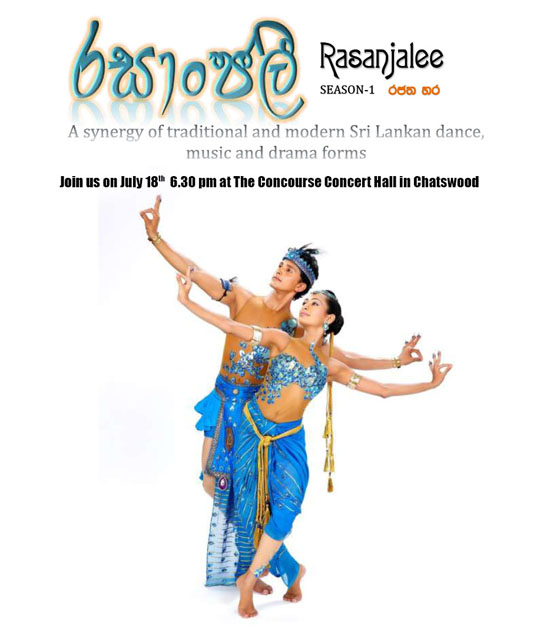 Now pilgrims from all over the world come to the temple where this relic is kept.
Now pilgrims from all over the world come to the temple where this relic is kept. In addition to Galle Fort and the city of Kandy, there are six other UNESCO World Heritage Sites in Sri Lanka
Yala National Park is a place where you can see exotic animals that live in their natural environment. Tourists are often taken there on safari — I saw several dozen cars along the way.
The safari didn't impress me: we saw few animals, and the jeep shook a lot on the bumpy road. Mostly we saw birds, deer, wild boars, buffalo and elephants. We also looked at crocodiles from afar. You can meet leopards in the park, but we were not lucky.
250 $
we paid for the trip to the waterfalls and safari
For the trip to the waterfalls and safari we paid the driver 250 $ (17 393 R). The owner of our accommodation found the driver for us.
Safety
Before the trip, I read that in Sri Lanka you need to be careful with food and drinks: hepatitis A and typhoid fever are common on the island.
 Here it is better not to drink water from fountains and ask not to put ice in drinks. In the end, we only drank bottled water. We also bought dairy products only in supermarkets, and we didn’t order ice cream and milkshakes in cafes - you never know how they are stored. We also did not buy anything from street vendors.
Here it is better not to drink water from fountains and ask not to put ice in drinks. In the end, we only drank bottled water. We also bought dairy products only in supermarkets, and we didn’t order ice cream and milkshakes in cafes - you never know how they are stored. We also did not buy anything from street vendors. Before the trip, we were vaccinated against hepatitis A at the central vaccination station, it is valid for five years. If you get vaccinated again in six months, immunity will be lifelong. We paid 3,000 R for the vaccination. It was also possible to get vaccinated against typhoid fever, but we remembered this late - we came to the clinic a couple of days before the trip, and it must be done in advance, about a couple of weeks.
What Immunizations Should I Get Before Traveling to Sri Lanka - US Centers for Disease Control and Prevention
The address of the central vaccination point in Moscow is st. Trubnaya, 19
There are mosquitoes in Sri Lanka that spread dengue fever.
 More often they are found in large cities, for example, in Colombo. As the owner of our accommodation explained to me, there are practically no such mosquitoes in Galle. To protect yourself from them, you need to actively use repellents, close doors and windows at night, and lower a net on the bed.
More often they are found in large cities, for example, in Colombo. As the owner of our accommodation explained to me, there are practically no such mosquitoes in Galle. To protect yourself from them, you need to actively use repellents, close doors and windows at night, and lower a net on the bed. I also heard that street theft is common in Sri Lanka. We never encountered this, but still observed the most banal safety precautions: we didn’t take a lot of cash with us, held our bags tightly, walked only along busy and lit streets and tried not to show our mobile phones. On the beach, we never went swimming together - one of us always stayed to look after things.
In all cafes I asked to bring drinks without ice I don’t think it’s worth drinking this water, although it is written that it is drinking , wooden souvenirs and famous Ceylon tea. We visited the Kadugannawa tea factory, where we were given a tour in Russian, had tea and cake, and were offered to buy local products. For five packs of tea with a total weight of 1 kg, we paid 2000 LKR (744 R).
For five packs of tea with a total weight of 1 kg, we paid 2000 LKR (744 R). After the factory, our driver took us to the Spice Garden - I suspect he is paid to bring tourists there. There we were given a tour - also in Russian: they showed us how cardamom, sandalwood, cocoa, etc. grow. They gave us tea and offered to buy local products. In general, the scheme is the same everywhere and working - we bought two sandalwood creams and vanilla. They paid 6000 LKR (2233 R) for everything. Later we saw the same bottle of vanilla in the supermarket - where it cost four times cheaper.
We also brought wooden souvenirs from Sri Lanka: an elephant with a raised trunk for mom and a tuk-tuk for a nephew. We spent 4050 LKR (1507 R) on them. In an Ayurvedic cosmetics store, I bought two soaps for 1300 LKR (484 R).
Remember
- A visa to Sri Lanka can be obtained online for $35 (2435 R) and at the airport for $40 (2782 R). Carefully check your details in the received letter - they must be the same as in the passport.


